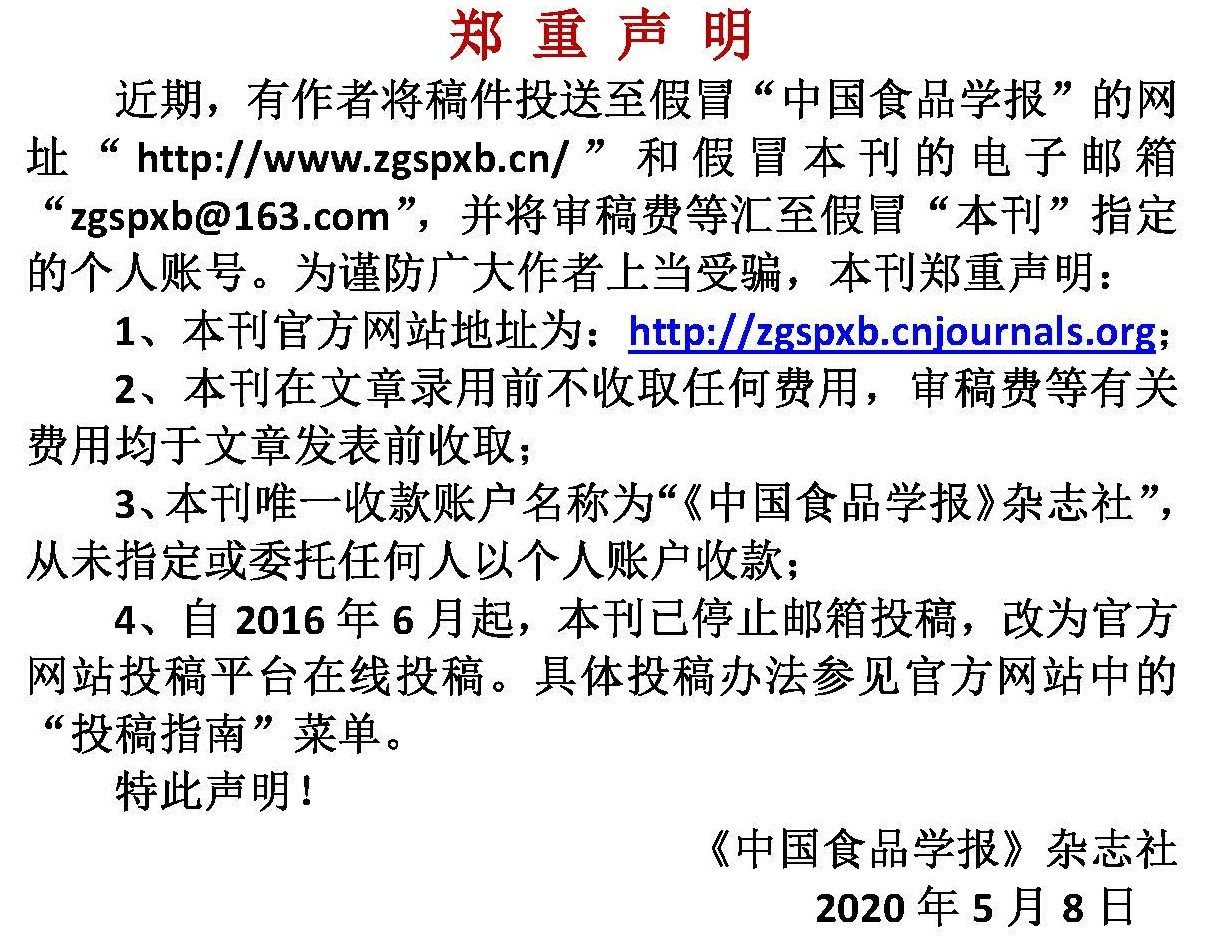豌豆蛋白-姜黄素纳米颗粒的稳定性及抗氧化活性
作者:
作者单位:
(1.中国食品发酵工业研究院 北京市蛋白功能肽工程技术研究中心 北京 100015;2.北京工业大学环境与生命学部 北京 100124;3.中国农业大学工学院 北京 100083)
作者简介:
通讯作者:
中图分类号:
基金项目:
Stability and Antioxidant Activity of Pea Protein-curcumin Nanoparticles
Author:
Affiliation:
(1.Beijing Engineering Research Center of Protein and Functional Peptides, China National Research Institute of Food and Fermentation Industries, Beijing 100015;2.Department of Environment and Life Sciences, Beijing University of Technology, Beijing 100124;3.College of Engineering, China Agricultural University, Beijing 100083)
Fund Project:
引用本文
任杰,卢知浩,吴晗硕,曲令航,刘文颖,李国明.豌豆蛋白-姜黄素纳米颗粒的稳定性及抗氧化活性[J].中国食品学报,2024,24(11):118-126
复制分享
文章指标
- 点击次数:
- 下载次数:
- HTML阅读次数:
历史
- 收稿日期:2023-11-27
- 最后修改日期:
- 录用日期:
- 在线发布日期: 2024-12-25
- 出版日期:
文章二维码

版权所有 :《中国食品学报》杂志社 京ICP备09084417号-4
地址 :北京市海淀区阜成路北三街8号9层 邮政编码 :100048
电话 :010-65223596 65265375 电子邮箱 :chinaspxb@vip.163.com
技术支持:北京勤云科技发展有限公司
地址 :北京市海淀区阜成路北三街8号9层 邮政编码 :100048
电话 :010-65223596 65265375 电子邮箱 :chinaspxb@vip.163.com
技术支持:北京勤云科技发展有限公司
